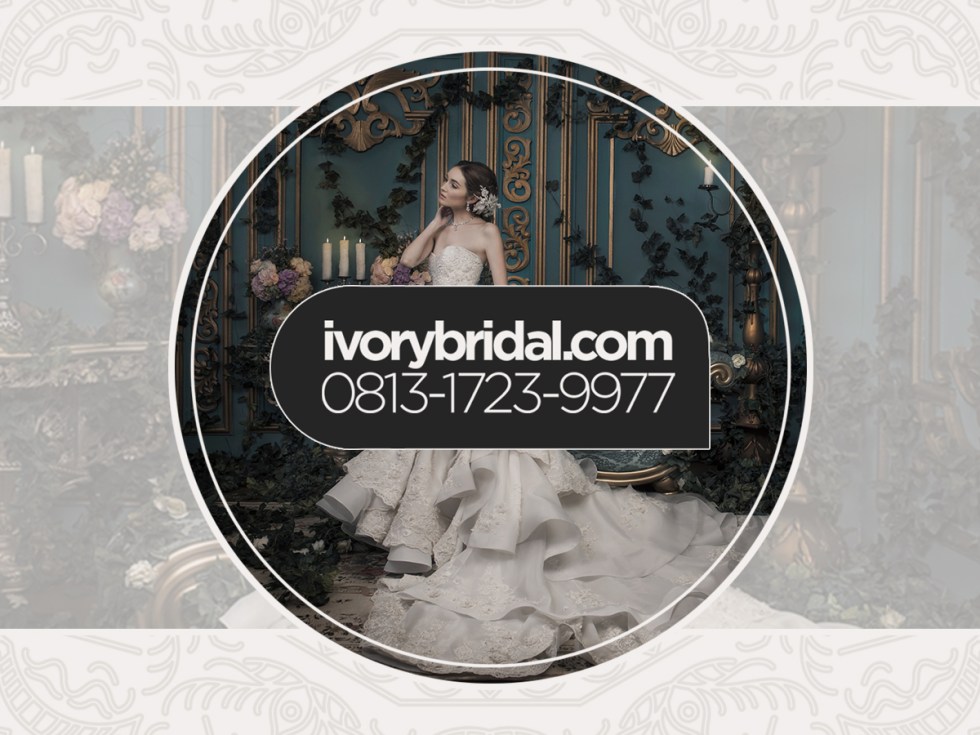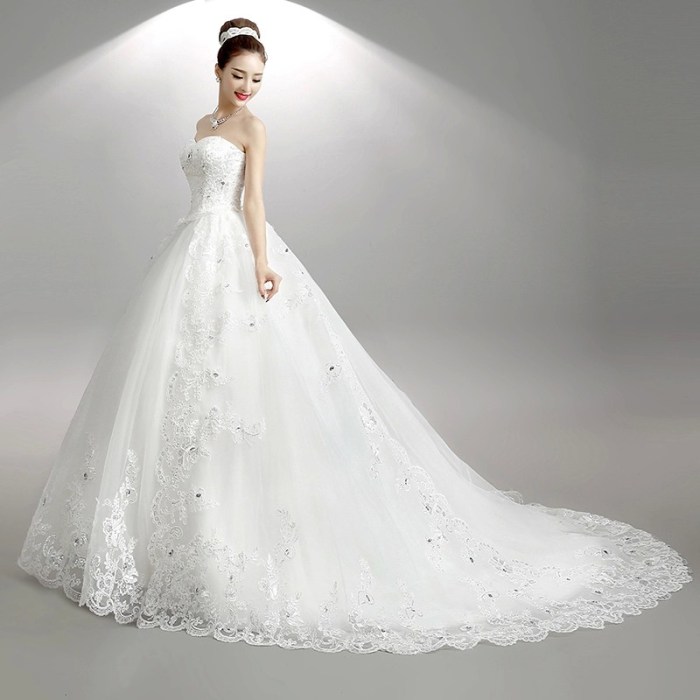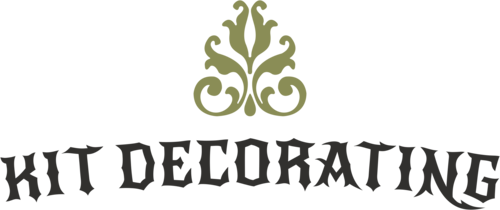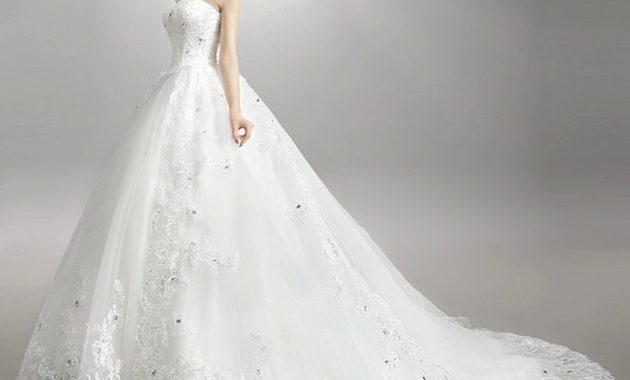Budget Considerations for Wedding Dresses
Best place to buy a wedding dress – Choosing a wedding dress involves careful consideration of your budget. Understanding typical price ranges and exploring various options will help you make an informed decision. This section will provide a breakdown of costs, examples of dresses at different price points, and a comparison table to aid your planning.
Wedding Dress Price Ranges

Source: wordpress.com
Wedding dress prices vary significantly depending on designer, fabric, embellishments, and retailer. Generally, you can expect to find dresses within the following ranges:
- Budget-Friendly: $500 – $1500. These dresses often feature simpler designs and readily available fabrics.
- Mid-Range: $1500 – $3000. This range offers more design options, potentially including higher-quality fabrics and some embellishments.
- Luxury: $3000+. Luxury dresses typically feature high-end fabrics, intricate detailing, and designer names.
Remember that alterations are an additional cost, typically ranging from $200 to $800 depending on the extent of alterations needed.
Examples of Affordable and Luxury Dress Options
Affordable options can be found at retailers like David’s Bridal or online marketplaces like ASOS. These often feature classic A-line or sheath styles in simple fabrics like chiffon or crepe. Luxury options are available from designers like Vera Wang or Monique Lhuillier, often featuring intricate beading, lace, and luxurious fabrics like silk or tulle.
Wedding Dress Price Comparison
| Brand | Style | Price Range | Material |
|---|---|---|---|
| David’s Bridal | A-line | $500 – $1200 | Tulle, chiffon |
| BHLDN | Bohemian | $1000 – $2500 | Lace, silk |
| Vera Wang | Ballgown | $3000+ | Silk, tulle |
| Monique Lhuillier | Mermaid | $4000+ | Lace, silk |
Types of Wedding Dress Retailers
Several retail channels offer wedding dresses, each with its own advantages and disadvantages. Understanding these differences will help you choose the best option for your needs and preferences.
Comparison of Wedding Dress Retailers
Here’s a comparison of bridal boutiques, department stores, online retailers, and sample sales:
- Bridal Boutiques:
- Pros: Personalized service, expert advice, wide selection of designers and styles.
- Cons: Higher prices, limited return policies.
- Department Stores:
- Pros: Convenient location, wider range of price points, potential for sales and discounts.
- Cons: Less personalized service, potentially less extensive selection.
- Online Retailers:
- Pros: Convenience, wider selection, potentially lower prices.
- Cons: Difficulty in assessing fit, potential shipping delays, limited return policies.
- Sample Sales:
- Pros: Significant discounts on designer dresses.
- Cons: Limited selection, often “as is” condition, high competition.
Factors Influencing Dress Selection
Choosing a wedding dress is a deeply personal decision influenced by various factors. Understanding these factors will guide you towards the perfect dress for your big day.
Venue, Theme, and Personal Style
The venue, wedding theme, and your personal style significantly impact your dress choice. A rustic barn wedding might call for a bohemian-style dress, while a formal ballroom wedding might necessitate a classic ballgown. Your personal style—whether it’s romantic, modern, or minimalist—should guide your selection.
Key Features to Consider
Consider the silhouette (A-line, mermaid, sheath), neckline (strapless, sweetheart, halter), fabric (lace, tulle, silk), and embellishments (beading, embroidery, appliqués). These elements contribute to the overall look and feel of the dress.
Wedding Dress Selection Flowchart
A simplified flowchart would begin with considering the venue and theme, leading to the identification of preferred silhouettes and necklines. Then, fabric and embellishments would be selected based on personal style and budget, culminating in the final dress choice.
Finding the Perfect Fit and Alterations
Finding the right size and getting professional alterations are crucial for a flawless wedding day look. This section details the process and cost implications.
Finding the Right Size and Getting Alterations
Most bridal salons offer professional fittings. It’s important to schedule these well in advance of the wedding to allow ample time for alterations. Alterations are almost always necessary to achieve a perfect fit, regardless of initial size.
Importance and Cost of Professional Alterations, Best place to buy a wedding dress
Professional alterations ensure a flattering and comfortable fit. Experienced seamstresses can adjust the length, waist, bust, and other areas to perfectly complement your body type. Costs vary depending on the complexity of the alterations, but generally range from $200 to $800.
Common Alterations and Their Costs
Common alterations include hemming, taking in the waist or bust, adding straps or sleeves, and adjusting the neckline. Each alteration has a varying cost, and a detailed quote should be obtained from the seamstress before proceeding.
Finding the best place to buy a wedding dress depends on your style and budget. If you’re dreaming of a fairytale look, you might consider an Anastasia-inspired gown; check out this stunning collection for inspiration: anastasia inspired wedding dress. Ultimately, the best place to buy your dress will offer a comfortable shopping experience and a dress that perfectly fits your vision.
Reviews and Recommendations
Online reviews offer valuable insights into customer experiences with different wedding dress retailers. This section presents examples of positive and negative reviews and summarizes overall ratings.
Customer Experiences Across Various Brands
Reviews highlight aspects such as fit, quality, customer service, and return policies. It’s important to consider a range of reviews to gain a balanced perspective before making a purchase.
Summary of Customer Reviews
| Retailer | Positive Review Excerpt | Negative Review Excerpt | Overall Rating |
|---|---|---|---|
| David’s Bridal | 3.8/5 | ||
| BHLDN | 4.2/5 | ||
| Azazie | 4.0/5 |
Ethical and Sustainable Considerations
Ethical sourcing and sustainable practices are increasingly important in the wedding industry.
This section discusses the significance of these factors and provides examples of brands committed to them.
Ethical Sourcing and Sustainable Practices
Consider brands that prioritize fair labor practices, use eco-friendly materials, and minimize their environmental impact. Supporting these brands promotes responsible consumption and contributes to a more sustainable future.
Examples of Ethical and Sustainable Brands
Several brands are committed to ethical production and sustainable materials, using organic cotton, recycled fabrics, or employing fair trade practices.
Questions to Ask Retailers
- Where are your dresses manufactured?
- What materials are used in your dresses?
- What are your labor practices?
- What steps do you take to minimize your environmental impact?
Illustrative Examples of Wedding Dress Styles: Best Place To Buy A Wedding Dress
Three distinct wedding dress styles—A-line, ballgown, and mermaid—are described below, including fabric choices and suitable body types.
A-line Wedding Dress

Source: co.id
The A-line dress is universally flattering, accentuating the waist and flowing gracefully to the floor. It’s suitable for most body types. Fabrics like chiffon, crepe, or lace work well for this style. Accessories like a delicate veil or simple jewelry complement the classic elegance.
Ballgown Wedding Dress
The ballgown features a fitted bodice and a full, voluminous skirt, creating a dramatic and romantic look. It’s ideal for brides who want a fairytale feel. Tulle, organza, or silk are common fabric choices. A statement tiara or elaborate jewelry can enhance the regal effect.
Mermaid Wedding Dress
The mermaid dress hugs the body closely from the shoulders to the knees, flaring out dramatically at the bottom. It’s best suited for brides with hourglass or pear-shaped figures. Lace, satin, or crepe are popular fabric choices. A simple veil or elegant earrings complement this style’s sophisticated silhouette.
FAQ Overview
What is the average cost of alterations?
Alteration costs vary greatly depending on the extent of the work needed, ranging from a few hundred to over a thousand dollars.
How far in advance should I start shopping for my wedding dress?
It’s generally recommended to start shopping 9-12 months before your wedding to allow ample time for ordering, alterations, and potential delays.
Can I return a wedding dress if it doesn’t fit?
Return policies vary greatly by retailer. Some offer returns, while others may only allow exchanges or offer store credit. Always check the retailer’s specific policy before purchasing.
What should I bring to my wedding dress appointment?
Bring comfortable undergarments, shoes similar to what you plan to wear on your wedding day, and photos of dresses you like for inspiration.

